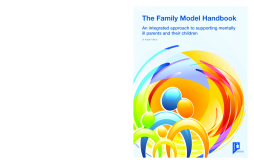
Additional Information
Book Details
Abstract
The Family Model uses an integrated approach to supporting mentally ill parents and their children, for professionals working with parental mental illness.
Table of Contents
| Section Title | Page | Action | Price |
|---|---|---|---|
| Cover | Cover | ||
| Half Title | i | ||
| Copyright | ii | ||
| Dedication | iii | ||
| Contents | 1 | ||
| About the author | 3 | ||
| Acknowledgements | 4 | ||
| Chapter 1 Introduction | 7 | ||
| Chapter 2 Overview: breadth, burden, barriers and benefits | 23 | ||
| Chapter 3 Conceptual approaches | 65 | ||
| Chapter 4 The Family Model: introduction | 79 | ||
| Chapter 5 The Family Model: individual domains | 109 | ||
| Chapter 6 The Family Model: relationships and linkages between key domains | 153 | ||
| Chapter 7 The Family Model: approaches to practice | 193 | ||
| Chapter 8 Services and systems organisational frameworks | 239 | ||
| Chapter 9 Prevention and early intervention: achieving family-focused mental health services | 265 | ||
| Chapter 10 Conclusions: challenging the status quo | 289 | ||
| Appendices | 299 | ||
| Further reading and resources | 321 | ||
| The Family Model Handbook Interactive Features | 323 |
